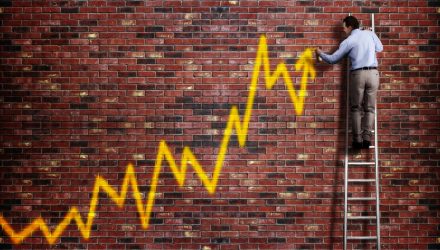An inverted yield curve has been the cause of much angst the past week in the capital markets, but on Tuesday, the bond market stabilized, allaying fears of a recession and helping the Dow Jones Industrial Average climb over 200 points.
The pair consisting of the short-term 3-month Treasury yield and the long-term 10-year yield have been the prime focus the past week. On Tuesday, the 3-month note eased off its upward ascent while the 10-year yield climbed, decreasing the steepness of the inversion.
Fears of an inverted yield curve racked the markets during 2018’s fourth quarter sell-off, but they returned last week as the short-term 3-month and longer-term 10-year yield curve did as such–unveil an inversion that hasn’t been seen since 2007–just ahead of the financial crisis.
The spread between the 3-month and 10-year notes fell below 10 basis points for the first time in over a decade. This strong recession indicator contrasted a more upbeat central bank, but investors were quick to sense the cautiousness.
Related: Bet on a Weak Dollar With Emerging Markets Bond ETF ‘EMLC’
Global Slowdown Still on Their Minds
However, the wall of worry still had fears of a global economic slowdown, particularly after last week when Federal Reserve Chairman Jerome Powell said that “we’ve noted some developments at home and around the world that bear our close attention.”
“There’s lots of angst about global economic growth. That’s understandable because it has been slowing significantly since early 2018,” said Ed Yardeni, president and chief investment strategist at Yardeni Research. “Furthermore, we can all observe that ultra-easy monetary and debt-financed fiscal policies aren’t as stimulative as policymakers have been hoping.”
Last Friday, fears of a global economic slowdown saw the Dow fall 460 points. Nonetheless, other economic indicators like a low unemployment level are preventing analysts from sounding the alarm on a forthcoming recession.
“Expectations are for a pretty weak first quarter overseas to go along with a fairly weak U.S.,” said Sam Stovall, chief investment strategist at CFRA Research. “The real question is whether it’s just a weak first quarter and then it recovers. Our expectation right now is that it is more of a soft landing.”
“I think we’re just going through a pretty healthy digestion of gains,” said Stovall. “Q1 softness will probably be followed by a recovery in Q2, both on an economic perspective as well as an earnings outlook. I would tell investors you are probably better off buying than you are bailing.”
For more market trends, visit ETF Trends.







